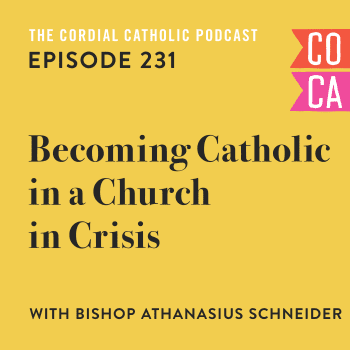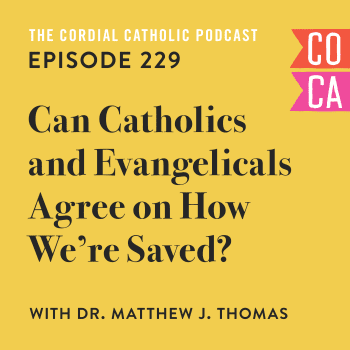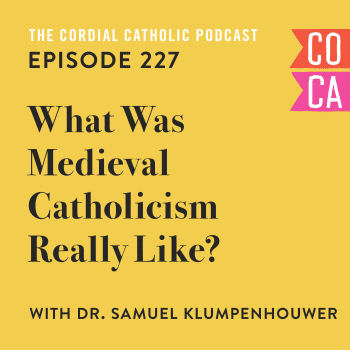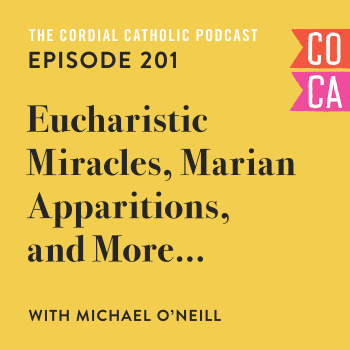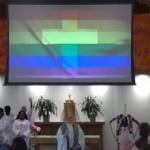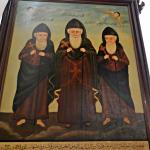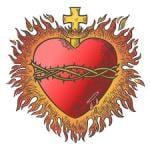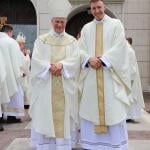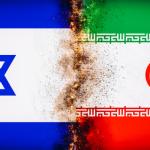
Let’s play a word association game. When I say, “Vatican II,” what do you think of?
Often times, for Catholics of a certain generation, the term Vatican II can send shudders up the spine. For others, its a source of bitter division between the traditional rites and liturgies of the Catholic Church and the new, modernized Mass that was established following the reforms that have come to be known simply as Vatican II.
But the Second Vatican Council was actually a series of enormous, ecumenical meetings which sought, above all else, to foster a more active participation in the very rites and liturgies which made up the life of the Catholic Church.
In other words, the whole point and purpose of Vatican II was to help all Catholics to better understand and participate in their faith.
This is, indeed, a holy and laudable goal.
But while the Fathers of Vatican II—the cardinals, bishops, priests, and theologians who drafted and wrote the documents—were clear and concise in their goals the practical interpretation, on the ground, was often less then successful. As a result, the reforms of Vatican II left an entire generation of Catholics rather poorly grounded in their faith and confused about what their role was on any given Sunday.
Thankfully, a movement is afoot to re-examine the reforms of Vatican II in light of what the documents actually said and what the theologians and clergy involved behind the scenes intended. The result is bearing much fruit.
At its core, Vatican II aimed to foster active participation in the life of the Church and, in particular, at Mass. What does active participation mean? It means we Catholics understand and actively participate in our faith. We are not merely spectator Catholics but intentional disciples, as author Sherry Weddell says. We learn about our faith. We choose to be Catholics. And we live it out in a daily, active way through prayers, acts of charity, and a worldview in harmony with the teachings of the Christ through His Church.
This sounds awesome, right? And maybe rather unlike a lot of Catholics you know.
Active participation in the Mass, then, is simply an extension of our faith life as Catholics and takes shape in a very similar way.
First, we should understand what’s happening in the Mass in order to participate more fully. If we fully grasp the incredible nature of the perpetual, once-for-all sacrifice of Christ that’s being dramatized during Mass we will, naturally, approach it with a better attitude, a deeper appreciation and understanding, and experience a whole new wellspring of grace every Sunday morning.
Second, we should choose to participate in the Mass. In the chaos of our everyday lives our presence at Mass should be intentional. When the priest prays, “My sacrifice and yours,” we should have something in mind to bring before God. When we pray we should be listening carefully to the needs of our parish community so that when we say, “Lord, hear our prayer,” we can mean it. When we move forward to receive our Lord in the Blessed Sacrament we should strive to do so as reverently as possible, showing God the unfathomable deference that He deserves. When we sing, we should sing as enthusiastically as the hymn demands, even when the musical accompaniment leaves much to be deserved (nevermind our actual singing!).
Finally, active participation in the Mass means living out the Mass even when the Sunday morning celebration is over. We are, as Weddell says, intentional disciples. We are not merely spectators or even just participants. Indeed, the Mass is more akin to exercising at the gym than anything else. We need to work out; to become engaged in our faith, in the Mass, in order to bring the grace of God out to all of his people. To the waitress we might meet at the restaurant at lunch. To the people we encounter at the grocery store on the way home. To our friends and family and, yes, even the colleagues we see on Monday morning at work.
Our active participation in the Mass, and the life of the Church, does not end when Father processes out of the nave.
In the end, if we make the effort to learn more about our faith, if we choose to intentionally engaged on a Sunday morning, and if we live out the Mass beyond the weekend and well into our daily lives what we will see is what the authors, the Fathers, of the Vatican II reforms really intended. Not, ultimately, to change the nature of the Mass, the Church, and its sacraments to water them down but to encourage a deeper participation of all Catholics—to draw the Catholic faithful into a deeper relationship with Christ, our centre, and to send us out, too.



